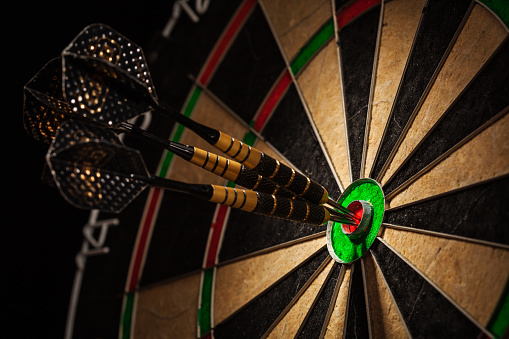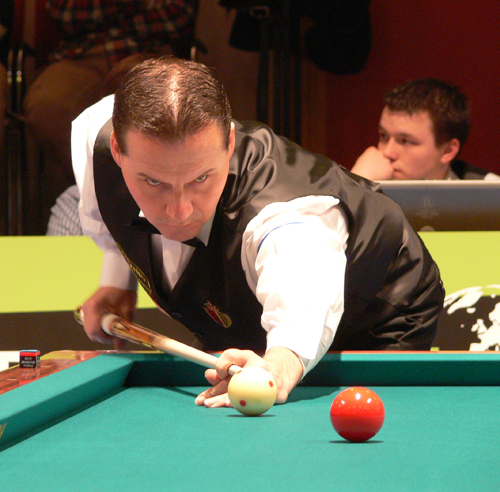General Rules of Duckpin Bowling
Duckpin bowling equipment consists of lightweight 3-6 pound balls around 5 inches wide, and 15-inch tall pins. Lanes measure 41.5 inches wide and 60 feet long. Scoring is based on strikes, spares, and pinfall – with points awarded accordingly. Bowlers get up to 3 rolls per frame to knock down all 10 pins. Proper ball delivery is critical – you must release the ball behind the foul line and it cannot bounce. Violating rules like stepping over the foul line can result in penalties. Understanding these fundamentals will help you truly appreciate the nuanced gameplay and unique challenges of duckpin bowling.
Playing Equipment Specifications
The playing equipment used in duckpin bowling consists of a ball and pins. The duckpin bowling ball typically weighs between 3 and 6 pounds, with a diameter of approximately 5 inches. The pins used in duckpin bowling are smaller than their tenpin counterparts, standing about 15 inches tall and having a maximum diameter of 5 inches at the base.
When it comes to ball weight considerations, it's important to choose a ball that you can comfortably control and maneuver. Heavier balls may provide more power, but they can also be more challenging to handle, especially for beginners. Lighter balls, on the other hand, can be easier to control but may lack the necessary force to knock down all the pins.
The bowling ball properties, such as the material and surface texture, can also impact your game. Experimenting with different ball options can help you find the one that best suits your playing style and preferences. Remember, the right equipment can make a significant difference in your duckpin bowling experience.
Bowling Lane Dimensions
A typical duckpin bowling lane measures 41.5 inches in width and extends for 60 feet in length, with the foul line marking the start of the playing area. You'll find that the lane surface is generally made of hardwood or synthetic materials, designed to provide a consistent and smooth rolling surface for the balls.
The lane construction materials can vary, but they're usually chosen for their durability, moisture resistance, and ability to maintain a level playing surface. Some common materials include maple, pine, and engineered wood composites. The lane preparation methods are vital for ensuring a fair and consistent game. This typically involves regular cleaning, conditioning, and resurfacing to keep the lanes in top shape.
Proper lane maintenance is essential for an enjoyable duckpin bowling experience. The dimensions and construction of the lanes are meticulously engineered to create a challenging yet fair playing field for all participants. By understanding the specifics of the bowling lane, you can better appreciate the intricacies of this unique and engaging sport.
Scoring System Overview
You'll find that the duckpin bowling scoring system is quite different from its tenpin counterpart. The point calculation breaks down into a series of specific considerations, including strikes, spares, and pin count. Understanding these elements is essential to tracking your progress and improving your game.
Point Calculation Breakdown
Duckpin bowling's scoring system hinges on the calculation of points earned from each frame, which players must thoroughly understand to excel at the game. The numerical scoring guidelines are straightforward yet essential. In a standard frame, you'll earn points based on the number of pins knocked down with your first and second rolls. A strike, where you knock down all 10 pins with your first roll, earns you 40 points plus the sum of your next two rolls. A spare, where you knock down all 10 pins with your first two rolls, earns you 20 points plus the number of pins knocked down with your next roll. For any other result, your points equal the number of pins knocked down. Mastering this point scoring calculation is key to consistently posting high scores and dominating the lanes. With practice and diligence, you'll unveil your full potential as a duckpin bowling champion.
Scoring Considerations
To excel at duckpin bowling, you'll need to thoroughly understand the sport's extensive scoring system. The scoring process involves a series of complex calculations that determine the points earned in each frame, with strikes and spares playing a pivotal role in maximizing your score.
In duckpin bowling, the handicapping rules play an essential role in ensuring fairness and competitiveness. Your overall score is calculated by adding your frame-by-frame points to your handicap, which is based on your average performance. This system levels the playing field, allowing bowlers of varying skill levels to compete on an equal footing.
Additionally, the lane conditions can drastically impact your scoring. Factors such as oil patterns, lane surface, and temperature can all influence the way the ball behaves, affecting your ability to knock down pins. Mastering the nuances of the lane conditions is key to consistent, high-scoring performances.
Understanding the duckpin bowling scoring system, handicapping rules, and the impact of lane conditions will be essential to elevating your game and emerging victorious on the lanes.
Frame Structure and Gameplay
In duckpin bowling, each frame is composed of two rolls. To score points, you'll need to knock down all the pins on either the first or second roll. If you fail to clear all the pins, your score for that frame will be the total number of pins knocked down.
Frame Composition
Each frame in duckpin bowling consists of a player's attempt to knock down all ten pins with a maximum of three rolls. The pins are arranged in a triangular formation, with the front pin placed directly in the center. Your goal is to strategically roll the ball to strike the pins, knocking them down in the most efficient manner possible. The ball's trajectory is vital, as it must navigate the intricate pin placement to achieve the desired result.
Duckpin bowling emphasizes precision and skill, rather than pure power. The smaller ball size and unique pin configuration require a delicate touch and keen anticipation of the ball's path. As you approach the line, consider the pin positioning and adjust your aim accordingly. A well-placed shot can clear the entire rack, while a misaligned roll may leave stubborn pins standing.
The frame composition in duckpin bowling is a dance of strategy, technique, and adaptability. Each roll is an opportunity to demonstrate your mastery of the game and move one step closer to a strike or spare.
Scoring System
The scoring system in duckpin bowling is integral to the game's frame structure and overall gameplay, as it dictates how points are tallied and how a player's performance is evaluated. In each frame, you have the opportunity to knock down all 10 pins with your first roll (a strike) or your second roll (picking up a spare). Striking – knocking down all 10 pins with the first roll – awards you 30 points, plus the total pins knocked down on the next two rolls. Picking up a spare – knocking down the remaining pins with the second roll – grants you 10 points, plus the total pins knocked down on the next roll. The goal is to accumulate the highest score possible over the course of 10 frames. By mastering strike mechanics and efficiently picking up spares, you can maximize your scoring potential and emerge victorious in this classic bowling format.
Ball Delivery and Restrictions
You'll start your delivery with the ball resting on the floor behind the foul line, and you can't step over the line until the ball leaves your hand. Duckpin bowling has some unique ball delivery restrictions to keep things fair and challenging. The ball weight is limited to a maximum of 3 pounds, 12 ounces, so you'll need to strategize about pin placement and how to generate the desired force.
When you release the ball, it must roll, not bounce. You also can't use any devices to impart spin or curve on the ball. Straight, no-frills deliveries are the name of the game. Once your ball is in motion, you've got to stay in the designated area until it reaches the pins. Stepping over the foul line prematurely will result in a foul, and you'll lose those pins. Stay focused, keep your delivery smooth and consistent, and use your ball weight and pin placement strategy to knock 'em all down!
Foul Lines and Penalties
Stepping beyond the foul line before your ball reaches the pins will result in a penalty, nullifying any pins that were knocked down on that roll. Likewise, any pins that are knocked down due to the ball bouncing, or by using a device to impart spin, won't count towards your score. Maintaining proper form and delivery is essential in duckpin bowling to avoid these infractions.
Duckpin bowling leagues have strict etiquette expectations that all participants must adhere to. Foul line violations, as well as using any mechanical assistance to influence the ball's trajectory, are strictly prohibited. Failure to comply with these rules can result in disqualification from league participation.
Respecting the game's integrity is a core tenet of duckpin bowling. By upholding the sport's standards, you'll not only avoid penalties but also foster an environment of camaraderie and fair play. Embrace the sport's unique challenges and focus on mastering the subtle techniques that separate the casual bowler from the dedicated enthusiast.
Frequently Asked Questions
What Is the Ideal Ball Weight for Duckpin Bowling?
When selecting a duckpin bowling ball, you'll want to prioritize a lightweight ball, typically between 3-4 lbs, to guarantee control and grip. Consider your physical strength and comfort when determining the ideal ball weight for your unique playing style.
Can I Use a Regular Bowling Ball in Duckpin Bowling?
No, you can't use a regular bowling ball in duckpin bowling. With a typical 10-pin ball weight of 16 pounds, you'll struggle to control the ball and execute effective playing strategies. Stick to the lighter, smaller duckpin balls for ideal performance.
How Many Pins Are Set up in Duckpin Bowling?
In duckpin bowling, 10 pins are set up in a triangular formation. To succeed, you must employ strategic ball placement and pin positioning techniques to knock down all 10 pins with your smaller, lighter ball. This exhilarating game challenges your skill and precision.
Is There a Dress Code for Duckpin Bowling?
You're free to wear whatever you like, but appropriate footwear is required – non-marking soles are a must. Casual attire is recommended, as duckpin bowling is a relaxed, fun activity meant to liberate you from formality.
Can I Wear Regular Shoes While Playing Duckpin Bowling?
You can absolutely wear your regular shoes while playing duckpin bowling. The priority is finding comfortable footwear that allows you to move freely. Just avoid anything with high heels or excessively slick soles, which could impact your stability on the lanes.






